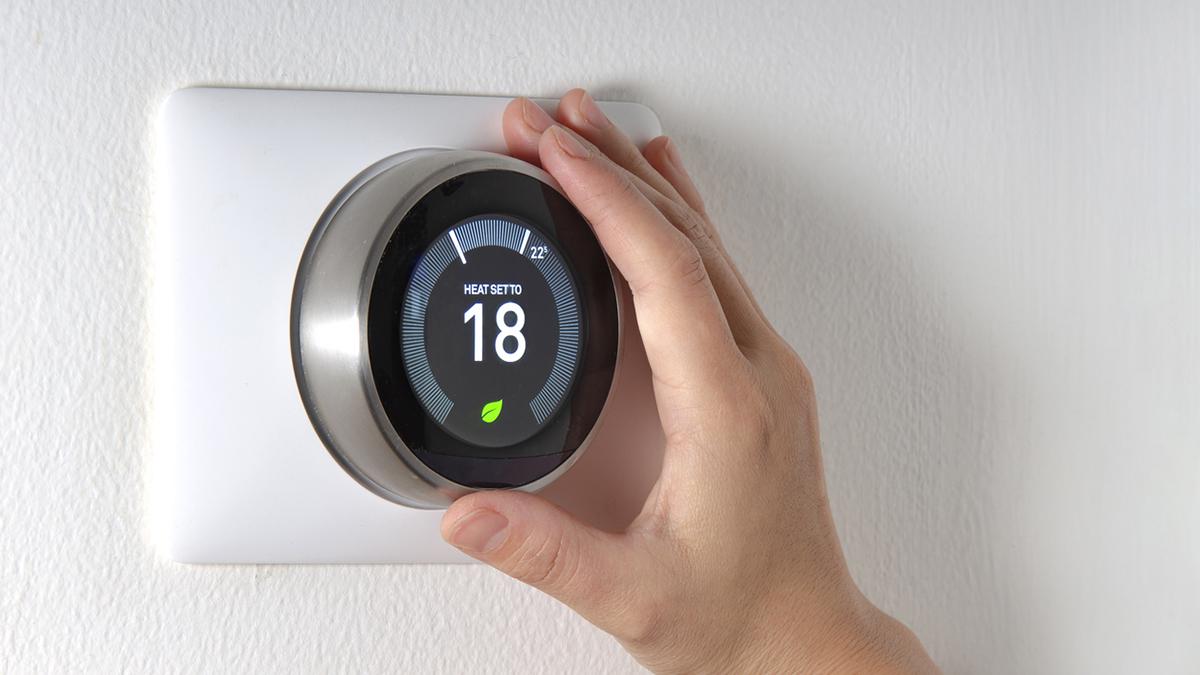Working at a reasonable temperature is important not only for your comfort but also your health and safety

High temperatures can cause tiredness, loss of concentration, dizziness, fainting or heat cramps. When it is too hot, the temperature of your blood also goes up. If it rises above 39⁰C there can be very serious consequences, and at over 41⁰C even fatal ones.
See a Health and Safety Executive (HSE) guide to heat stress in the workplace.
On this page:
What temperature should your workplace be?
It is widely accepted that the optimum indoor working temperature is between 18⁰C and 24⁰C, depending on the type of work being done.
By law, the minimum temperature allowed is normally 16⁰C. However, there is no legal maximum temperature, except that it should be 'reasonable'. The HSE says this depends on the activities being performed.
The Chartered Institution of Building Services Engineers has recommended a maximum of 18⁰C for hospital wards, 21⁰C for therapy treatment rooms and gyms, and 20⁰C for offices.
What your employer must do
By law, your employer must assess whether the temperature at a workplace is a risk to staff and if so must put controls in place to protect them.
They should also consult with workers or their union representatives on the best ways to cope with high or low temperatures.
The NHS Staff Council sets out employers’ obligations on workplace temperature.
The Health and Safety Executive says employers should provide:
- a reasonable working temperature in workrooms
- local heating/cooling where a comfortable temperature cannot be maintained throughout each workroom
- rest facilities where necessary – for example, for hot work
- suitable heating systems
Keep yourself comfortable
These are things you can to do to help keep yourself comfortable, such as:
- add or remove layers of clothing, depending on how hot or cold you are
- use a desk or pedestal fan to increase air movement
- use window blinds to reduce the heating effects of the sun
- if you are too warm, drink plenty of water (avoid caffeinated or carbonated drinks)
- if possible, work away from direct sunlight or sources of heat, such as machinery
- take regular breaks to cool down in hot conditions or heat up in cold ones
Make the change in your workplace
Ideally, you can push your employer to take action to ensure working temperatures are comfortable.
As there is no legal maximum working temperature, you will have to decide whether the temperature in your workplace is reasonable. If it isn't, you and your colleagues – or your CSP safety rep if there is one – can make the case to management for action.
In this section:
Check your workplace temperature
You can take the temperature yourself in the workplace – your employer is obliged to provide thermometers in departments.
However, air temperature measured with a thermometer is only one part of whether an environment is comfortable to work in. Humidity, heat sources, clothing and breezes all have an effect, as does an individual’s weight, age and health. The TUC has more advice on dealing with high temperatures in the workplace.
If you do record the air temperature, take readings twice a day at the same times in the morning and afternoon. Take readings in different parts of your work area and then determine an average from your collected readings. Also record outside temperatures.
Report incidents and record concerns
Ensure you and your colleagues put in an incident report when patients, visitors or staff fall ill or are experiencing adverse effects. Even if it is just dizziness, this symptom should be recorded as it is relevant to showing there is a problem.
Get colleagues to keep records of patients that they have avoided treating in the work area due to concerns of the contraindications that heat may cause harm – for example, those with heart conditions or respiratory illnesses.
Collate the views of your colleagues
It is important to find out how your colleagues are feeling about temperatures in your work area.
You could undertake a survey of staff to record how the heat is affecting them personally, asking:
- Do they experience dizziness, dry eyes, dry cough or headaches?
- Where do they work and what they are doing in those areas and for how long?
- What are their ages (as this information can also be relevant)?
What your CSP safety representative can do
If there is a CSP safety rep in your workplace, get them to ask the employer to undertake a risk assessment of the work area.
They can also request sickness absence records over periods of excessive temperatures and look for trends in health conditions.
Become a CSP safety rep
If there isn't one in your workplace, consider becoming a safety rep.
What to ask your employer for
Once you have collated evidence that temperatures are not reasonable, you and your colleagues can ask your line management for action. If you have a CSP safety rep, they can take the matter higher or go to the organisation’s health and safety committee.
The actions they could take need not be expensive. Here are some ideas to put to them:
- Redesigning the work area – moving people away from windows, or installing reflective film or blinds, can assist in cooling down a work area.
- Installing fans or natural ventilation – providing fans or windows that open may help. However, they are less effective for high temperatures. In these situations employers should provide portable air-cooling cabinets.
- Allowing staff to be flexible in their working arrangements – often staff travel to work on overcrowded trains or buses. Allowing them to finish earlier or later can help.
- Providing extra rest periods – this is particularly important provision for pregnant members or women undergoing menopause, who are more susceptible to fluctuations in temperature.
- Agreeing a relaxed uniform policy – such as allowing shorts to be worn.
- Ensuring fresh drinking water is available.

